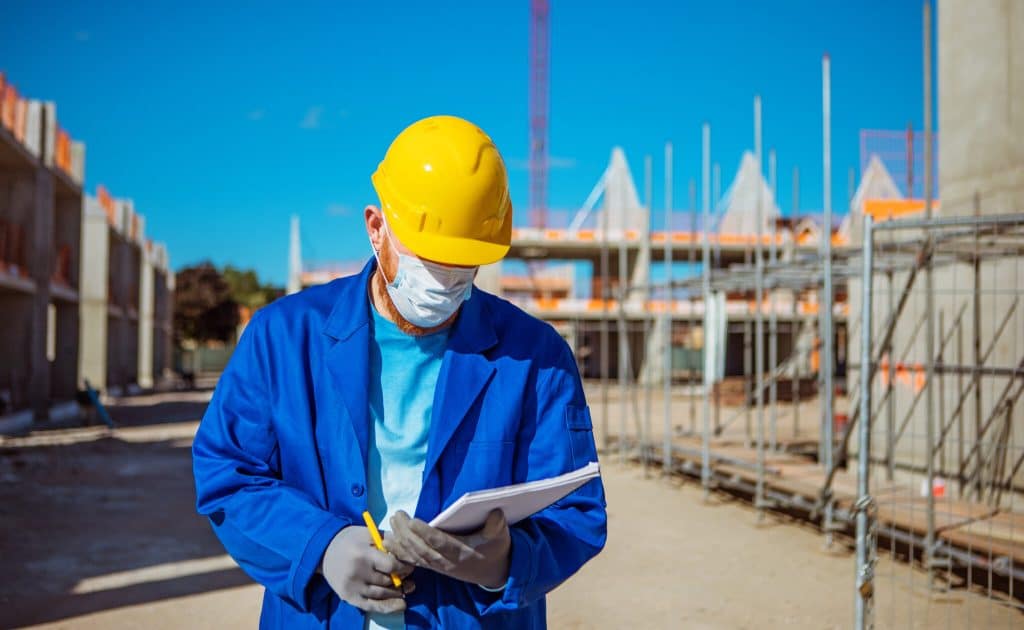
Building Back
September 3, 2020
In uncertain times, an uneven construction industry continues to show signs of resilience
When the first coronavirus quarantines were announced, the economic impact on a range of industries wasn’t just enormous, it was historic. As states have slowly begun the two-steps-forward, one-step-back dance of slowly reopening, it’s become clear that some industries have been better able to weather the COVID-slowdown storm better than others. For construction professionals everywhere, commercial construction has been a mixed bag.
The current state of the construction industry reveals signs of both the turbulence and the resilience that has been evident over the past several months. Taking a closer look at what segments have performed well, what trends have become apparent, and what new and noteworthy features stand out in an evolving industry landscape, is an important first step in thinking about the future of commercial construction.
Sluggish start and subsequent stabilization
Not long after the pandemic began to spread in earnest, construction activity slowed as uncertainty rippled through the industry. It has been more of a hiccup than a long-term disruption, however, as things have started to show signs of life and have been moving forward slowly but steadily ever since.
One recent note of caution worth paying attention to is that leasing activity has been in a bit of a lull lately. Commercial tenants have been understandably moving slower to sign new leases, and when they do, it has been more short-term extensions. Fortunately, that’s been balanced by relatively steady opportunities in the medical and industrial segments, and by some continued business from banks and larger franchise retailers.
Job-site complexities
Like in virtually all industries, construction and development professionals have been forced to adapt to new health-and-safety-related realities. Some construction timelines have been extended by up to 25% due to logistics challenges, such as the need to limit the number of workers who can be on-site at any one time, and sporadic difficulties procuring some construction materials. Construction teams have generally done a great job implementing and abiding by safety measures like wearing masks, following clear entrances and exit pathways, taking advantage of on-site hand sanitizer stations, restroom modifications, following health guidelines and mandatory temperature checks.
While safety and spacing logistics have necessitated some cutbacks that have extended schedules, disruptions are very size- and site-dependent, and so the nature of those delays varies considerably. A recent 5,000-square-foot retail construction project experienced some modest delays because of materials procurement. A larger civic facility project saw virtually no significant delays, despite necessarily spacing out some tradesmen activities. In general, experienced construction professionals have shown their value by expertly navigating these new logistical challenges.
Post-COVID projections
As far as market trends go, we will see more commercial real estate tenants looking for space in the suburbs where there is lower density. While the price of materials remains high, there is also a lot of pent-up demand right now. A higher-than-usual number of trades are proactively reaching out, suggesting that we could also be benefiting from some more favorable labor numbers moving forward.
While there has been a lot of discussion about how “sticky” work-from-home programs and policies will be, we expect no more than approximately 10% of all companies to create a work-from-home plan. In other words, the vast majority will return mostly or entirely to an in-person office environment once the crisis abates.
Those environments will likely look quite different, however—another factor that provides reason for optimism about construction workflow going forward. We are seeing (and will almost certainly continue to see) both tenant expansions for companies looking for more space for each employee, and some downsizing to accommodate more work-from-home activity. Interiors will feature more enclosed offices in lieu of cubicles and larger cubicles, and there will be a continued trend to reduce or eliminate shared spaces and communal amenities like kitchens and game rooms.
All of these changes mean that construction professionals are likely to be busier than ever in the not-too-distant future. Selecting the right construction professionals to help you navigate those changes, and determine what (if any) modifications or remodeling would meet your needs, should be a priority for decision-makers in the post-COVID world that no longer seems quite so far away.
Related Posts

Crain's Notable Commercial Real Estate Leaders
Blog Post | July 17, 2024
Click Here for Full Article Scope of work: Andrew Gutman worked his way up at myriad commercial real estate firms to lead Farbman Group, Farbman companies, 30 million rentable square feet...
Read More
What’s a Broker to Do? Tight Vacancy and High Interest Rates Mean No More Slam-Dunk Deals
Blog Post | July 9, 2024
Brokers Have to Get Creative — as in Create Deals Brokers need to study their local markets like never before and know who the top buyers and sellers are, stressed...
Read More
Connect Midwest Multifamily Panelists on 2024 CRE Trends
Blog Post | June 26, 2024
CRE experts from the recent Connect Midwest Multifamily conference in Chicago reflected on their experience and the importance of meeting customer needs in business. As the age-old mantra says,...
Read More